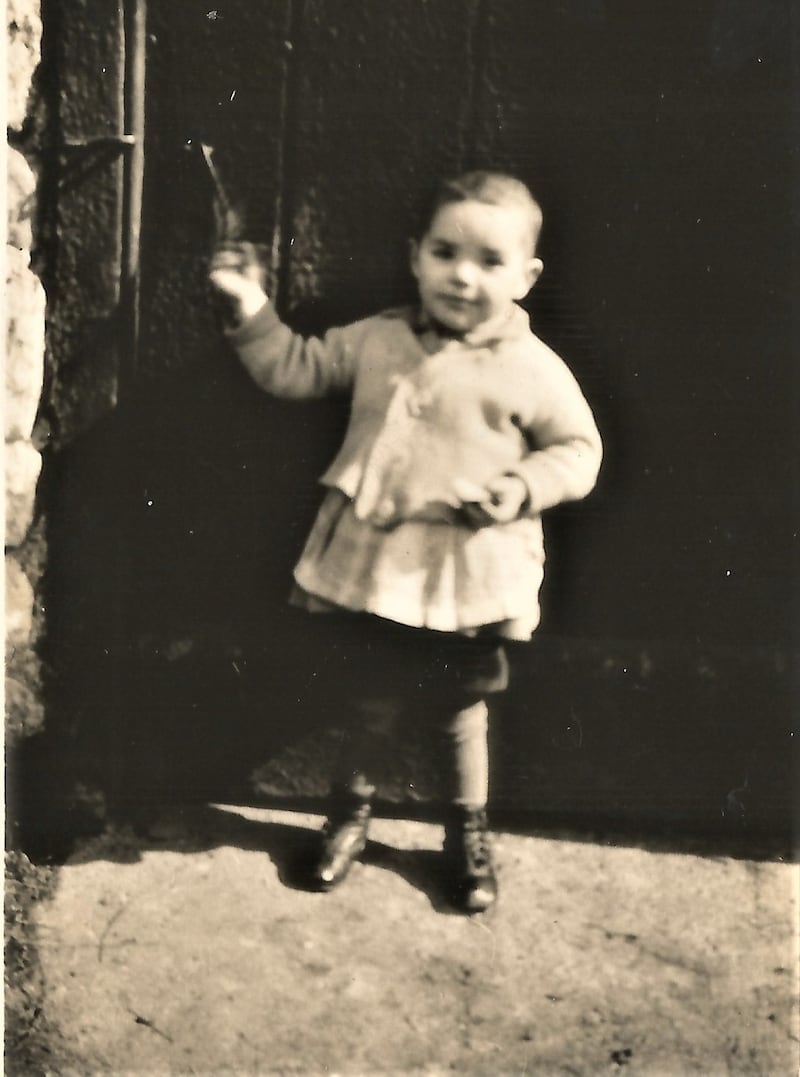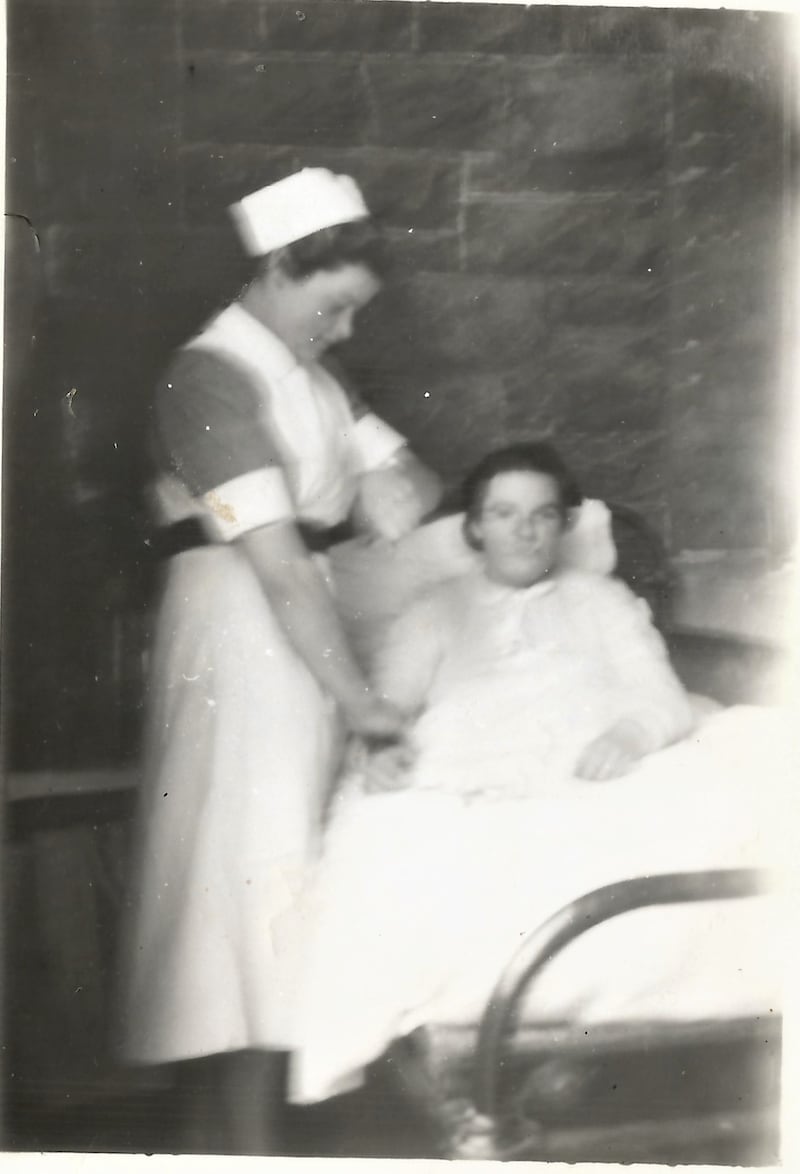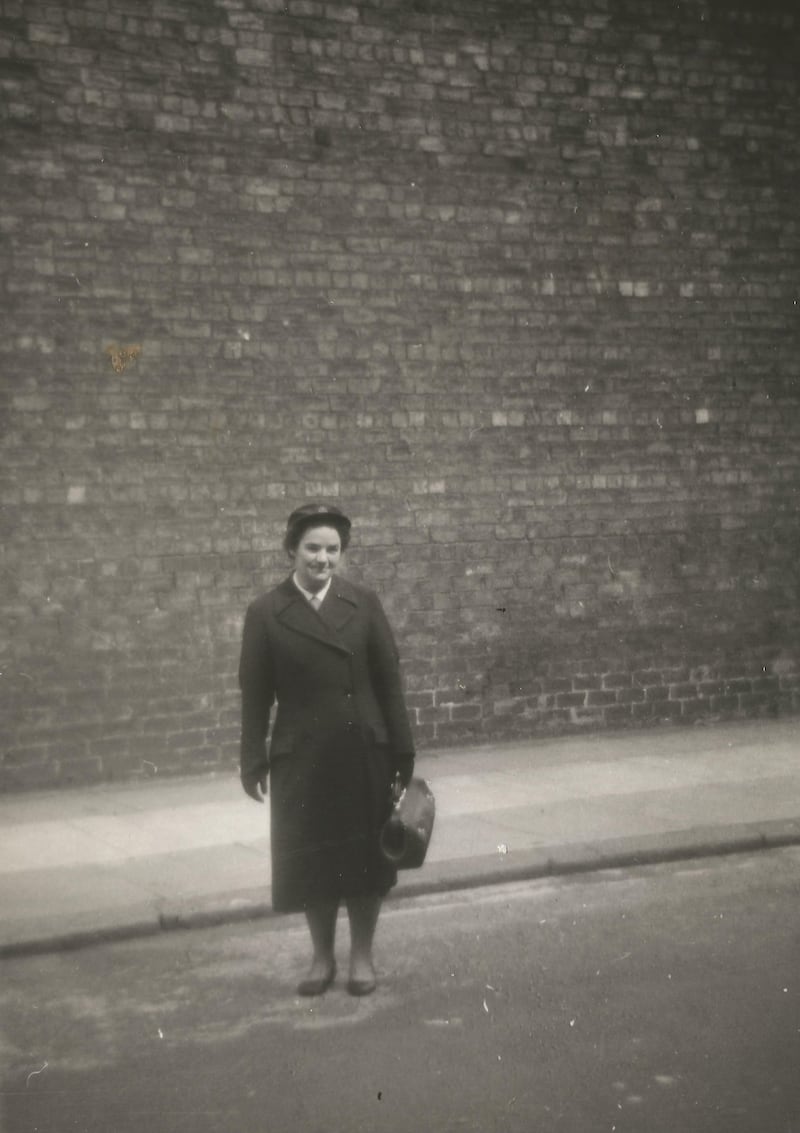The diary belonged to my Aunty Mary, who contracted tuberculosis as a student nurse. The tape is an edition of The Health Report, a Radio 1 programme I worked on in 1999. It features patients and staff who lived in Castlerea Sanatorium during the late 1940s, when minister for health Dr Noël Browne began his campaign to eradicate tuberculosis, which included a network of sanatoriums to isolate patients with the disease.
Their stories included a young mother separated from her husband and child for four years; a 14-year-old boy far from home, terrified as he watched men bleed and die around him; a young man whose family had already been decimated by TB; and the recipient of Europe’s first successful lobectomy.
They talked about seeing no family, of being confined to bed for months, not even allowed to the toilet. There were echoes of today’s isolating: finding ways to occupy days and make fun; boredom; loneliness; and occasional entertainment, though from visiting rather than virtual performers. And overshadowing it all – as the search continued for more effective treatments – was the cough that announced contagion and the constant prospect of a horrible death that left another bed vacant.

Many of our older people who “cocooned” during this pandemic experienced at first hand the devastation, isolation and stigma of TB. My own grandmother Annie was one of the 3,694 it killed in 1945, the year of the Tuberculosis (Establishment of Sanatoria) Act. She had been sick at home for three years. Pulmonary phthisis and cachexia – wasting away – were the registered causes. The words “tuberculosis” or “consumption” were not used. My father, Dermot, has memories of chatting to her at night across the landing about the spider moving from his bedroom to hers. He was six when she died.
He grew up on Griffith Avenue in Dublin and recalls lean-tos being built in neighbours’ gardens when someone in a family required isolation. At the age of 13 he would spend months on a Cappagh hospital verandah with suspected tuberculosis of the knee before receiving the all-clear. As he didn’t feel unwell, his recollections are predominantly happy; running from the nurse on bath days, and the communal throwing from balconies of reviled smoked fish – dinner on meatless Fridays – to the seagulls.
My mother’s sister Mary, meanwhile, had left Kilkenny to train as a nurse at the Meath Hospital, a career possibly prompted by her own childhood illnesses, which included long stays in the much-feared local fever hospital. In 1952, after working on a TB ward, Mary was transformed from nurse back to patient.

Her pocket diary for that year records:
January 30th, 1952
I received a great shock. I was told to go up to the infirmary for a fortnight's rest. I was not feeling one bit sick.
February 1st
Was told I would have to give up nursing for a year. What a dreadful shock it was, but I supposed that was the cross God put on me.
The next months of the tiny journal are blank, but we know Mary spent weeks on a balcony of the Meath Hospital in the care of a Dr Lane before being transferred to Newcastle Sanatorium in Co Wicklow, where Dr Browne, ousted as a minister, continued to fight the disease on the front line. Both doctors became revered names within the family.
Her diary resumes that autumn.
September 11th
What a joyful day it was to be told I could get up after eight months in bed.
September 14th
I am 21 today. Had a wonderful day even though I spent it in bed. Had folks up from home, also aunt Mollie & Breda Doherty.
Unlike many TB patients far from home, Mary had regular visitors. Though visits from my grandparents were infrequent, requiring the hiring of a car, other relatives and friends lived in Dublin. Her eldest sister, Josie, took the bus down to see her at least once a week at “The Anchor Hotel”, as the sanatorium was known locally.
Do you know anybody who can get her out of here? I have nobody. I'll die here, but you need to get her out if you can
Aside from visits, the highlights she deemed worth recording in her diary included a birthday gift of fruit from Matron, a parcel from home, confessions, Holy Communion, an hour’s sing-song and listening to the radio. But there were also bad days, like when visitors were “caught sitting on the bed by Dr –’B” - a violation of 1950s physical distancing – or those when she simply records “Nothing happened”, “Very depressed”. Many weeks remain blank, while occasionally her neat script turns spidery or illegible, signs that she was unwell or exhausted.
Treatments for TB in the 1940s and 1950s varied greatly, including antibiotics, bed rest – often on outdoor terraces – radical surgeries such as thoracoplasty, which gradually removed ribs and induced pneumothorax, where air was regularly pumped into the chest wall using a large needle (“refills”).
September 29th
I was screened & refilled. Moved back into the ward after spending four months out in the open. Did not like it one bit.
Mary would spend nearly 11 months of 1952 in bed. November 15th she described as “a very lucky day. Was told I could go out for an hour’s walk and also told that I may be going to the nurse’s home to live. Won £3 in the hospital sweep.”
However, there were many more months of bed rest before her discharge the following August. Back home in Kilkenny, when a routine chest X-ray revealed a collapsed lung, she was confined once again at the city’s former fever hospital, now converted into an auxiliary sanatorium.
Your granny was told there was no hope for her
My mother, Ellen, recalls: “Your granny was told there was no hope for her. Mary wasn’t even allowed home, but had to go straight into the Auxiliary. A woman in the next bed asked my mother: ‘Do you know anybody who can get her out of here? I have nobody. I’ll die here, but you need to get her out if you can.’ I think it was Dr Lane in the Meath they phoned, and Mary was collected by ambulance and brought back to Newcastle.”
There will be many papers written about the impact of Covid-19, on how our personalities and relationships coped and changed with social distancing, cocooning and self-isolation. And though they may not have been the nation of huggers we have become, it can have been no different for TB patients, enduring long periods without family and friends, with no livelihoods and little employment, possibly sharing close quarters with strangers.

September 30th
So far I have only spoken to two patients in the ward. Cannot bring myself to speak to the rest.
Finally deemed cured, Mary remained determined to become a nurse, even when required to restart her training. She travelled to Glasgow to earn her midwifery qualification, and then chose to stay in Scotland to become one of the city's district nurses. She kept up her rounds until retirement, encountering many patients with TB, and even succumbing again herself twice.
Holidays were spent with family in Ireland. During visits with us, Aunty Mary was a shrewd card player, a deft dresser of childhood wounds and a shaver of stubborn verrucas. Like all her nieces and nephews, we were regularly rebuked for our “cheek” or how we spoke to “our elders”.
Our own children would cajole far more fun out of her, even discovering her previously untapped skill for Wii Sport. Her Newcastle days, meanwhile, had honed her talents for needlework of all kinds. She was renowned for her embroidery, crochet, knitting and cross-stitching. Her blankets of crocheted squares – made from bags of random wool – were coveted, and made for anyone who admired them.
A nurse suggested that sometimes people who had lived alone wait to die alone. Mary, however, chose not to die in solitude
Retired and living alone in Kilkenny, she enjoyed company and a game of cards, but never sought them out. She was in her 80s when she recognised that social isolation did not suit her, and two convivial weeks convalescing at Drakelands House Nursing Home after a fall convinced her to move in full time.
It remained her home until this February, just before Covid-19 shut down visits and the country. Her only surviving brother, Dick, had travelled to spend time with her just before she began to fail. In her final days, family and friends dropped in and out as my mother sat vigil, only agreeing to take a break when a nurse suggested that sometimes people who had lived alone wait to die alone. Mary, however, chose not to die in solitude. She finally slipped away watched over by her sister and niece, and tended by the wonderful staff who had minded her so well, and kept her company for six years.
In the days afterwards she was waked, and talked about, and toasted. Extended family and old neighbours and friends reunited for her funeral. We know now how rare and special that was, and are grateful that the woman who survived TB should be spared our modern pestilence.
We are hopeful that we too shall overcome.




















